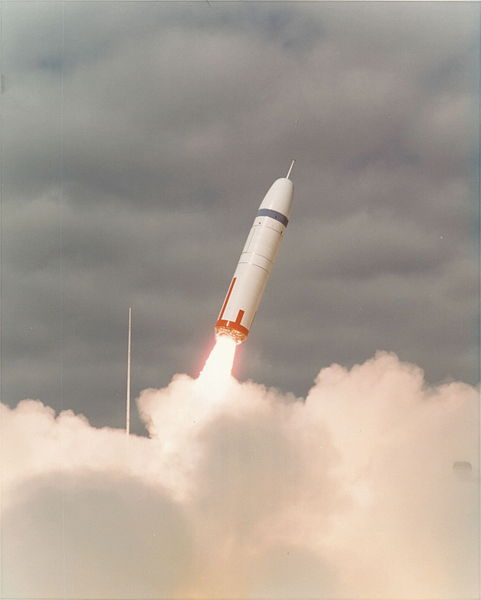The Trident missile is a submarine-launched ballistic missile (SLBM) equipped with multiple independently targetable reentry vehicles (MIRV). Originally developed by Lockheed Missiles and Space Corporation, the missile is armed with thermonuclear warheads and is launched from nuclear-powered ballistic missile submarines (SSBNs). Trident missiles are carried by twelve United States Navy Ohio-class submarines, with American warheads, as well as four Royal Navy Vanguard-class submarines, with British warheads. The missile is named after the mythological trident of Neptune.
Trident I first launch on 18 January 1977 at Cape Canaveral
The launching of a Trident I C-4 missile from the submerged USS Francis Scott Key and the re-entry vehicles plunging into the Atlantic Ocean, 1981
"Stop Trident I Testing Now" sign in 1987 protest at Cape Canaveral, Florida
A Trident II missile fires its first stage after an underwater launch from a Royal Navy Vanguard-class ballistic missile submarine.
Submarine-launched ballistic missile
A submarine-launched ballistic missile (SLBM) is a ballistic missile capable of being launched from submarines. Modern variants usually deliver multiple independently targetable reentry vehicles (MIRVs), each of which carries a nuclear warhead and allows a single launched missile to strike several targets. Submarine-launched ballistic missiles operate in a different way from submarine-launched cruise missiles.
A UGM-96 Trident I clears the water after launch from a US Navy submarine in 1984.
Polaris A-1
A Trident II missile just after launch.
Montage of the launch of a Trident I C-4 SLBM and the paths of its reentry vehicles








